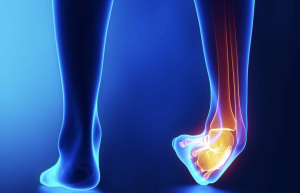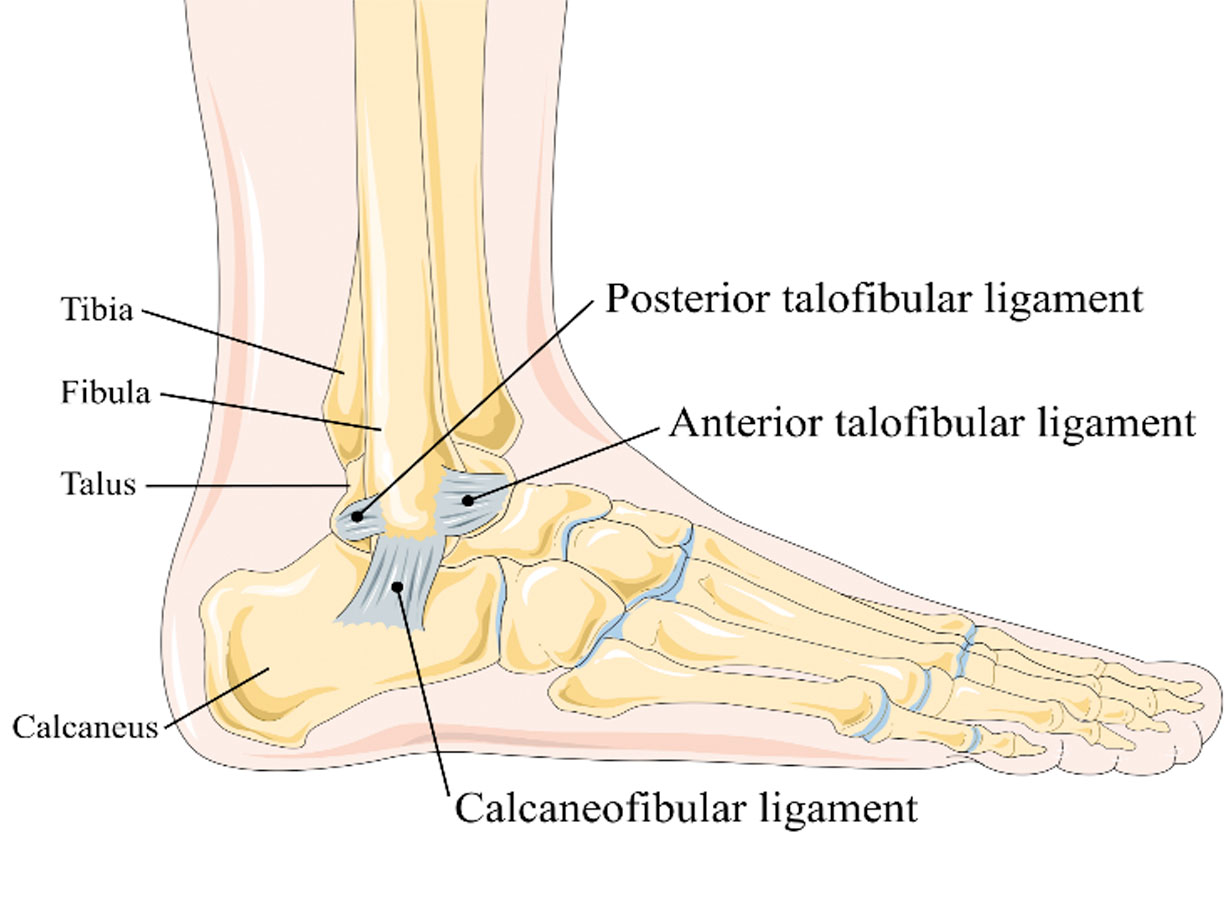Lateral ankle sprains are injuries to the ligaments on the outside of the ankle and are one of the most common injuries in sport (2). On the outside of the ankle, there are 3 ligaments that provide support (3). The ligaments on the inside of the ankle are a lot more stable and taught and are thus less commonly injured (3). Depending on their severity, ankle ligament sprains are graded as follows:
| Grade | Structures affected |
| 1 | Stretching of some ligament fibres, only visible microscopically. The joint remains stable. |
| 2 | Partial tear of the ligament, swelling, with some joint instability. |
| 3 | Complete tear of the ligament with substantial swelling and increased joint instability. |
Cause of ankle sprains
Ankle sprains typically occur because of a rapid change in direction. The ankle rolls outward whilst the foot turns inward, causing the ligaments on the outside of the ankle to over stretch or tear (1)(4).
Assessment
At Floyd Lebatie Physiotherapy, we pride ourselves on carrying out a comprehensive and detailed assessment. The various assessments look at the following: (I) Gait (walking and running) pattern because the pain and/or instability of these ligament injuries can change walking and running patterns. Additionally, we look at the (II) weight-bearing capability of the painful ankle as this will be affected by pain and subsequently affect the gait pattern. Signs and symptoms of inflammation such as (III) swelling, bruising and increased temperature

needs to be monitored and managed. We also perform specialized tests to examine the degree of damage (laxity) the ligament has sustained to help us determine the severity of the ligament sprain. It is imperative that we assess the (V) amount of movement or range of motion at the ankle to draw comparisons between visits and take note of any stiffness of the ankle. We also need to consider the (VI) strength of all the major muscle groups of the lower limb. Muscular endurance (stamina) becomes affected with ankle sprains and is thus assessed and managed accordingly. The ankle and its ligaments play a crucial role in (VII) balance and the (VIII) ability to subconsciously determine where the foot is in space (proprioception) (4). It is therefore imperative to undergo balance and proprioceptive tests. The outcomes of these tests are then used as a guide to determine return to sport decisions. We also ensure that all of our athletes undergo assessments of all of their functional sporting actions such as sprinting, jumping, landing and agility.
Management
Treatment for ankle sprains will firstly be aimed at reducing pain and inflammation – the following methods can be used: Protection – bracing or use of crutches to ensure less load is placed through the ankle (3). Ice and elastic compression stockings to assist with reducing swelling and pain (3). Pain and inflammation can also be managed by the use of anti-inflammatories and elevation of the affected ankle (3). While inflammation is being managed, it is also important to commence with the rehabilitation of the injured ankle which will focus on the following: Joint mobility, muscle strengthening and balance retraining. All of the aforementioned is done in conjunction with gradual and progressive loading to enhance proprioception. Agility training is also done to ensure an optimal return to sport. During each phase of the rehabilitation program, we provide our athletes with a program to perform independently at home, on the field or at the gym (5).
References
- Fong, D., Chan, Y.-Y., Mok, K.-M., SH Yung, P., & Chan, K.-M. (2009, July 30). Understanding acute ankle ligamentous sprain injury in sport. BMC Sports Science, Medicine and Rehabilitation., 1(14), 1-14.
- Malliaropoulos, N., Papacosta, E., Papalada, A., & Maffulli, N. (2006). Acute Lateral Ankle Sprains in Track and Field Athletes: An Expanded Classification. Foot and ankle clinics, 11(3), 497-507.
- Melanson, S. (2021). Acute Ankle sprain. StatPearls publishing LLC.
- Myrick, K. (2014). Clinical Assessment and Management of Ankle Sprains. Orthopaedic nursing, 33(5), 244-248.
- Rahman, M., Hossain, M., & Hossain, A. (2019). Evidence Based Physiotherapy Guideline for Conservative Management of Ankle Sprain. Journal of Scientific research, 23(2), 17331-17336.

